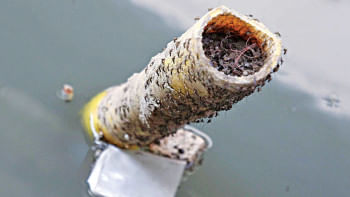Delivery of health services technology in the developing world: A proposal

The idea: In a webinar organised by the World University Network last month, the discussion focused on how to expedite the diffusion of evolving medical technology innovations in the delivery of healthcare in the developing world. While one may debate the viability of foregoing patents for new life saving therapies (e.g., the Covid-19 vaccines), I reasoned that the general sharing of information and advisories on technologies already on the shelf (but still subject to protection under patents and copyrights) with suitable developing country partners ("destination" countries, from hereon) may still be feasible and thereby hasten the delivery of critical healthcare in the developing world, in and out of pandemics. While the value of mutual knowledge sharing could be immense under emergency conditions, it would still promote public health under "normal" conditions.
To illustrate the point, take the case of an acute global shortage of basic supplies such as PPEs, medical-grade masks, oxygen concentrators and ventilators in the early phases of the Covid-19 pandemic. One can recall with horror the stories of doctors, nurses and health personnel using the same mask/PPE for days (even weeks). In a situation like this, the immediate value of knowledge sharing about what it takes to produce medical-grade PPEs and masks would have been enormous. Primarily, the partnership we have in mind is informal, helping destination country manufacturers produce improvised devices and equipment that are functional. Why then should a partnership not be forged between leading manufactures of quality products (say, Abbott or 3M) sharing knowledge, on a digital platform, with manufacturers, say in Bangladesh and India, capable of readily improvising indigenous versions of such products? With innate innovations, the latter manufacturers may in due course succeed in turning out world class products themselves. Source country manufacturers should ideally encourage such eventualities prompting them to innovate even faster and, in due course, perhaps move on to specialising in technologically more challenging products instead (like defibrillators). This process may be likened to the Schumpeterian "creative destruction" idea in the modern endogenous growth literature in economics.
The collaboration cited above is independent of the formal process whereby the original inventors often license producers in destination countries to manufacture (say labelled 3M) products locally. The latter mechanism (like the Serum Institute of India and the AstraZeneca (UK) vaccine partnership), happens autonomously in the form of "business as usual" when such a partnership appears both technologically feasible and commercially viable, and promises to be of mutual gain to both parties. Admittedly, both the formal and informal processes cited above would expedite the transfer of knowledge between source and destination countries, and would likely allow faster growth of output per capita, especially in the developing world. However, the formal technology transfer (via licensing, joint ventures, foreign direct investment and the like) is not under focus here for the simple reason that fostering such a mechanism would entail much advance planning. It would possibly be counter-productive to kickstart such an arrangement during a pandemic or a public health emergency while people are dying. The informal "transfer" may eventually blossom into a formal one, but that again is not the raison d'être of the proposal on the table here.
Modalities: Under what arrangements would the type of informal sharing of privileged knowledge envisaged above take place in the most effective manner, from the perspective of maximum benefit for care recipients in a destination country? Can patented drugs be brought under this arrangement? We can briefly explore the contours of a possible architecture.
There are three primary participants to the proposed agreement, namely the manufacturers in the country of origin and the destination, and the destination country healthcare delivery institutions. While a one-on-one (say between manufacturers in the two locations) liaison may be feasible in some contexts, ideally it would be best if the entire process was mediated by a major non-profit health NGO, an academic institution, or a reputable public health entity in the private sector to both economise on bureaucracy and maximise transparency. Such a competent entity, based in the destination country, may be entrusted to serve as the "gatekeeper/facilitator" and remain accountable to a board of trustees, nominated by all stakeholders. The gatekeeper would identify both the prospective manufacturers in the country of origin and in the destination country, as well as the care delivery authority and the latter's need, on an ongoing basis. It would draw up all documentation for mutual assent and thus monitor implementation thereof on an agreed-upon protocol. The articles of the "collaborative agreement" would clearly entail legal and technical aspects, which must be duly vetted at both ends. To the extent the knowledge sharing relates to physical devices and equipment, the primary international agreement will be limited to the producers in the two countries. Inclusion of patented drugs, even if the originator were to agree to knowledge sharing, would prove difficult on grounds of safety and medical ethics, unless fortuitously partnered with an existing destination country collaborator.
Possible export of products arising out of informal knowledge sharing to neighbouring countries may also be permissible if so spelled out under the agreement (with appropriate disclosures) between the two producers. The destination end-user only comes into the picture in terms of the logistics of how best the former can gain access to the object of collaboration in an equitable manner. The latter is a domestic issue, which the gatekeeper can also manage.
While the paragraphs above deal with the generic version of a tripartite agreement, the gatekeeper will also be required to guide the parties in question to produce a specific and unique version of the agreement on a product-by-product (or, service) basis. In terms of details, presumably a first order of business would be to draw up a tentative wish list of "technologies" of value to the healthcare delivery system in a particular public health context, and then identify major source country producers as well as a potential list of destination country manufacturers or knowledge centres who can potentially exploit such a technology with end-users in mind.
The Payfors: The source country manufacturers may dedicate CSR resources to defray out-of-pocket costs, say in the form of time used in securing an agreement to its liking, consultation and managing the dialogue during the implementation and monitoring phases. The destination country manufacturers will have to invest resources to similarly implement the agreement and undertake production or service delivery to end-users by charging fees commensurate with its expenses. Depending on the context, the destination public health/budgetary authorities may come forward with financial assistance as the situation may demand (recall Operation Warp Speed, a public–private partnership initiated by the US government to facilitate and accelerate the development and distribution of Covid-19 vaccines). The regulatory process relevant for such activities would possibly be covered in most cases by existing provisions in the destination country. In cases, the relevant authorities may have to deliberate and develop new regulatory guidelines as to pricing and the like. Were the collaboration as envisaged here to lead to commercial exports to third countries, the source country provider/manufacturer may seek a share of the profit and in that case, the latter contingency may be envisioned in the original agreement or in subsequent amendments mutually agreed upon.
The care delivery system would access the benefits under the proposed knowledge sharing agreement and finance any out-of-pocket costs out of budgetary resources at their disposal in the usual manner. All that is new is that the likely tools at their disposal have expanded by the framework under review here. New funding will, however, be required to secure the services of what we have termed the gatekeeper/facilitator, which will have to continue on a longer-term basis as new agreements become feasible over time. For the sake of transparency and conflict of interest, it would be ideal if funding for such services came from third parties such as global charities.
Syed M Ahsan is Professor Emeritus, Department of Economics at Concordia University (Montreal, Canada). He is grateful to Adriana Saraceni (Maastricht U) and Mike Raxworthy (U Leeds) for helpful discussions.

 For all latest news, follow The Daily Star's Google News channel.
For all latest news, follow The Daily Star's Google News channel. 



Comments